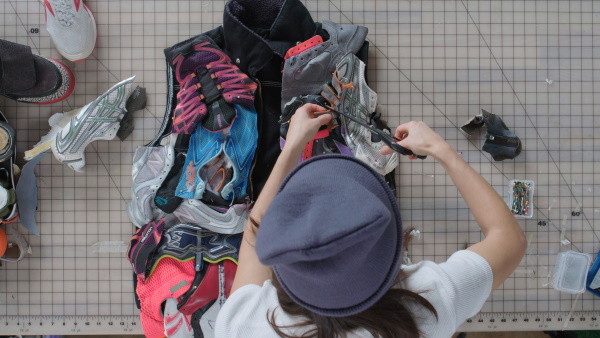Recently, society is demanding new ways of producing and consuming fashion. In order to face the climate crisis and reduce its carbon footprint, the fashion industry is calling the shots.
Some years ago, ‘Upcycling‘ began as a meeting point for Fashion Makers (artisans, dressmakers and seamstresses) and Fashion Lovers (followers of trends). However, little by little is starting to be a more extended trend.

On the road to sustainability, we need new ways of making fashion. The statistics are alarming: every year people are consuming around 70 million tons of clothes. Can you imagine how harmful that could be for our ecosystem? For instance, did you know that making a single standard t-shirt involves spending 2,700 litres of water? So, this should be a call to action and the clothing sector has a lot of to say about it. The good news is that the climate crisis has raised the awareness of both consumers and brands. They started to review their entire production chain, from raw materials to their resources, embracing greener practices.

Concepts such as ‘upcycling‘ or ‘circularity’ are becoming part of the everyday vocabulary of the fashion industry. They are alternative practices that many experts regard as the future, and even the salvation, of fashion.
‘Upcycling‘ could be the solution. But what is exactly ‘Upcycling’?
Upcycling is also known as supra-recycling. It consists of taking advantage of recyclable materials to create products that have a higher value than the original material had. In other words: transform waste into value items. The concept started ringing in the mid-90s. But it wasn’t until 2002 that William Mc Donough and Michael Braungart, in their book “Cradle to Cradle“, redesigned the way we make things. They introduced the idea of modifying materials to give them a second life and, therefore, make them useful again. But how can we introduce this in fashion?

Once we have known the concept, the next step is to apply it. How we do it as fashion consumers? The textile industry system is based on the three R’s: reduce (buy new products), reuse and recycle. The first point is very important, since we only use 20% of the clothes we have in our closet. Upcycling would be a way to reuse. It encourages us to extend the useful life of a product through modifications to improve it, in addition to buying second-hand clothes.
Upcycling would be a way to reuse.

On the other hand, there are many brands and designers that are also adopting this type of practice on their process. They are aware that the current way of production exploits our resources in a devastating way, and upcycling has meant a fresh commited approach to new fashion. An upcycling example that has been very well received is the one developed by the Dutch designer Daniëlle Cathari for Adidas. Actually, the collection is all sold – maybe because Kendall Jenner was involved in it. She transformed Adidas Originals garments into jacket and skirt sets, and created new jackets from trouser with button pockets. Always according to the 90’s aesthetic that it commands today in the streetwear.

But the possibilities of upcycling go beyond the patchwork aesthetic. For example, Nike has committed to reduce waste to zero and have managed to turn their own waste into really cool items. Sneakers like the futuristic Space Hippie –inspired by life on Mars, are an example of this.

This new culture also shows that sustainability is not incompatible with design and fashion. This year, many designers, have been forced by the pandemic to look inside their wardrobes to compose their new collections. They are trying to make upcycling the aesthetic trend of the season.
You may also be interested in reading:




You must be logged in to post a comment.